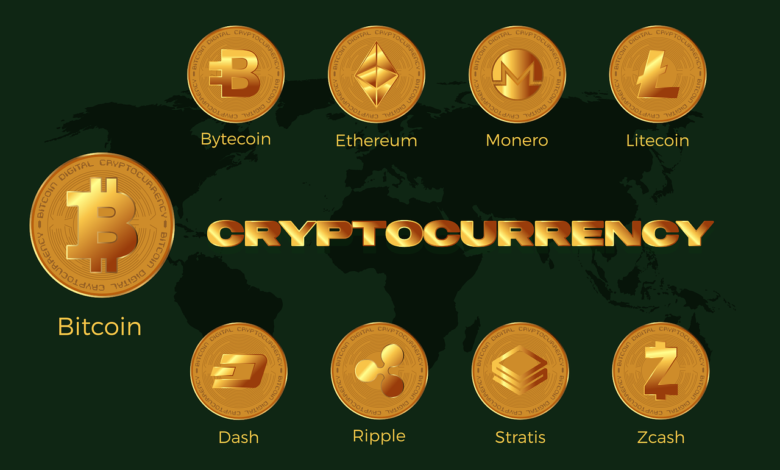Is Chainlink a Stablecoin? Data, Dollars, and the Future

Chainlink is a decentralized oracle network that bridges the gap between smart contracts on blockchains and the real world. It enables smart contracts to securely access and utilize off-chain data and computations, unlocking a vast array of potential applications.
Definition of Stablecoin
- A stablecoin is a type of cryptocurrency designed to maintain a stable value by being pegged to another asset, like the US dollar or a basket of fiat currencies.
- Stablecoins aim to provide the benefits of cryptocurrencies while minimizing price volatility, making them suitable for everyday transactions.
Characteristics of Chainlink
- Decentralized oracle network: Chainlink is a network of independent oracle nodes that retrieve, validate, and deliver real-world data to smart contracts.
- Data aggregation: Chainlink aggregates data from multiple sources, ensuring data integrity and reliability.
- Enabling smart contracts: By providing off-chain data, Chainlink allows smart contracts to interact with real-world events and information.
Stablecoin vs. Chainlink
While stablecoins and Chainlink both operate within the cryptocurrency ecosystem, they serve fundamentally different purposes:
- Stablecoins: Focused on maintaining price stability for use as a medium of exchange or store of value.
- Chainlink: Designed to bridge the gap between blockchains and external data sources, enabling more advanced and practical smart contract applications.
- Objective: Stablecoins focus on price stability, while Chainlink provides secure data for smart contracts.
- Technology: Stablecoins use various mechanisms for pegging, while Chainlink leverages a decentralized network of oracles.
- Use Cases: Stablecoins are used for payments and DeFi, while Chainlink empowers a wider range of blockchain applications beyond just finance.
Stability Mechanisms in Stablecoins
- Pegging mechanisms: Stablecoins employ various mechanisms, such as collateralization or algorithmic stabilization, to maintain their peg to another asset.
- Centralized or decentralized: Stablecoins can be issued and managed by centralized entities or through decentralized protocols.
Use Cases for Chainlink
- Decentralized Finance (DeFi): Enabling lending, borrowing, and other financial services through smart contracts.
- Gaming: Integrating real-world events and data into blockchain-based games.
- Insurance: Automating insurance payouts based on real-world data triggers.
- Supply chain management: Tracking and verifying product information throughout the supply chain.
Chainlink’s Impact on Price Stability
While Chainlink itself is not designed to maintain price stability, its functionality can contribute to the stability of cryptocurrencies and digital assets by:
- Enabling more accurate and reliable data inputs for smart contracts, reducing the risk of errors or manipulation.
- Facilitating the development of more robust and sophisticated DeFi applications, potentially contributing to market stability.
Market Perception
Chainlink is generally perceived as a crucial infrastructure layer for the wider adoption and practical application of blockchain technology and smart contracts. Its focus on enabling real-world data integration sets it apart from stablecoins and other cryptocurrencies aimed at serving as digital currencies.
Regulatory Considerations
- As a decentralized oracle network, Chainlink may face varying regulatory considerations depending on its specific use cases and jurisdictions.
- Stablecoins, on the other hand, are subject to increasing regulatory scrutiny, particularly those issued by centralized entities.
Challenges and Opportunities
Despite the promise, there are challenges to overcome:
- Regulation: Clear and consistent regulations will be crucial for building trust and attracting mainstream adoption.
- Scalability: Both Chainlink and stablecoins need to scale efficiently to handle a growing user base.
- Security: Maintaining the security of Chainlink’s network and stablecoin protocols is paramount.
The Future Unfolds: Chainlink and Stablecoins
The future of Chainlink and stablecoins is intertwined, shaping the evolution of the cryptocurrency ecosystem:
- Chainlink’s Expanding Role: As DeFi applications become more complex, the demand for secure and reliable data feeds will only grow. Chainlink is well-positioned to be the go-to oracle network for these applications.
- Stablecoin Innovation: New pegging mechanisms and regulatory frameworks could lead to more stable and widely adopted stablecoins. Chainlink will likely play a vital role in ensuring the accuracy and security of these innovations.
- Impact on Broader Adoption: Both Chainlink and stablecoins have the potential to make blockchain technology more accessible and user-friendly. This could lead to wider mainstream adoption of cryptocurrencies and decentralized applications.
Conclusion
Ultimately, Chainlink and stablecoins have a symbiotic relationship. Chainlink empowers stablecoins with secure data, while stablecoins provide a use case for Chainlink’s technology. As both these innovations evolve and mature, they will play a significant role in shaping the future of decentralized finance and the broader cryptocurrency landscape.
Frequently Asked Questions
- Which stablecoin is the best? Depending on the state of the market, the top 5 stable coins in 2024 may change, but some of the most well-liked ones at the moment are Tether (USDT), USD Coin (USDC), Binance USD (BUSD), Dai (DAI), and TrueUSD (TUSD). The most popular stablecoin, Tether (USDT), is correlated with the US dollar.
- Which stablecoin is the oldest? 2014 saw the introduction of BitUSD, the first stablecoin that was backed by cryptocurrencies. It lost its peg to the U.S. dollar in 2018 and never recovered. Tether (USDT -0.03%), the first stablecoin backed by currency, was introduced later in 2014.
- What supports USDT? Stablecoin USDT is backed by Tether’s dollar reserves and its value varies with the US dollar. The firm that issues USDT is Tether, which is owned by iFinex, a company registered in Hong Kong that also controls BitFinex, a cryptocurrency exchange.





